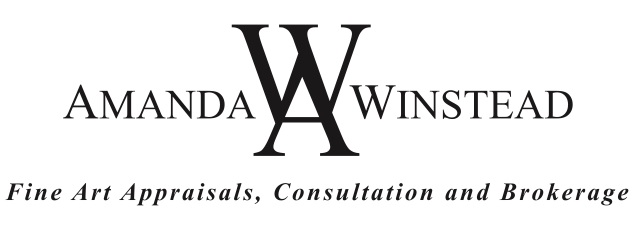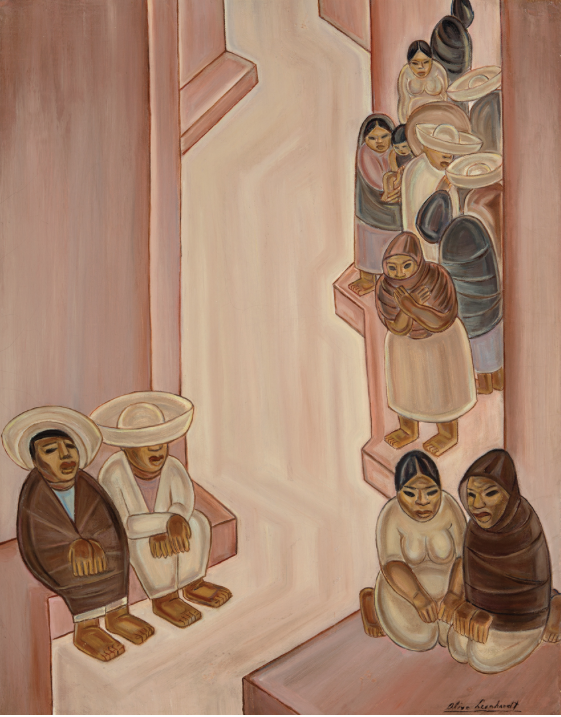Olive Leonhardt
(American/New Orleans, 1895-1963)
New Orleans artist Olive Leonhardt studied art at Newcomb College in 1914-15, and the following year attended the School of Fine and Applied Arts (later to become Parsons) in New York. She returned to New Orleans, getting a job at D.H. Holmes department store doing graphics. She shared a studio with Caroline Durieux in the French Quarter beginning in 1921 and was an active member of the Arts and Crafts Club. Leonhardt’s illustration art was all over New Orleans, appearing in periodicals, magazines, literary journals, on posters and stage sets. She hosted a salon at her Uptown home in the 1920s where artists and writers such as William Spratling, Natalie Scott, Weeks Hall and Lyle Saxon among others were guests.
Leonhardt first visited Mexico in 1930 and became enamored with the art and people of the country. She traveled there many summers during the 1930s and 1940s, visiting Taxco, Cuernavaca, Oaxaca and Orizaba. Through her connection with silversmith William Spratling, she met artists Rufino Tamayo and Diego Rivera during her first trip there. Leonhardt developed a striking compositional style during her time in Mexico, informed by the Pre-Columbian art-historical references of the artists' she had met and a representation of social concerns. She produced a group of paintings and drawings of Mexican subjects with simplified and distorted figures and a neutral color palette, which notably bear an aesthetic and stylistic influence from her cultural surroundings. In the painting offered here, Calle Manana, or “Street of Tomorrow,” painted c. 1935-39, her stylized figures stand on the sidewalks next to the street, which runs vertically through the middle of the composition.
In 1939, the Charles Morgan Gallery in New York opened a solo exhibition of Leonhardt’s paintings, including the work offered here. In the foreword of the exhibition catalogue he wrote: “Satirical drawings, rendered with a wit as sharp as a surgeon’s knife, have place Olive Leonhardt as the artistic descendant of Hogarth and Swift. This heritage from the graphic arts is retained in her painting. In these she extends and elaborates the documentary with deliberate understatement, monotones, and a savage geometry. The result is a balanced unbalance of line and color. This combination presents a visual experience that is to be compared only to music, for it carries a definite feeling of counterpoint and almost of sound.”
Leonhardt’s work is in the collections of the New Orleans Museum of Art and The Historic New Orleans Collection. Amanda Winstead Fine Art is pleased to present this painting of exceptional provenance and exhibition history. We invite your inquiry.
Reference:
“Olive Leonhardt,” Charles Morgan Gallery, New York, NY, 1939.
Leonardt, Gay, ed., Shaking Up Prohibition in New Orleans: Authentic Vintage Cocktails from A to Z, Olive Leonhardt & Hilda Phelps Hammond, Baton Rouge, LSU Press, 2015.
Pfohl, Katie A., Mexico in New Orleans: A Tale of Two Americas, LSU Museum of Art, Baton Rouge, LA, 2015.
Zohn, Kristen Miller, From New Orleans to Mexico and Back: Modernist Paintings by Olive Leonhardt, Lauren Rogers Museum of Art, Laurel, MS, 2017.

